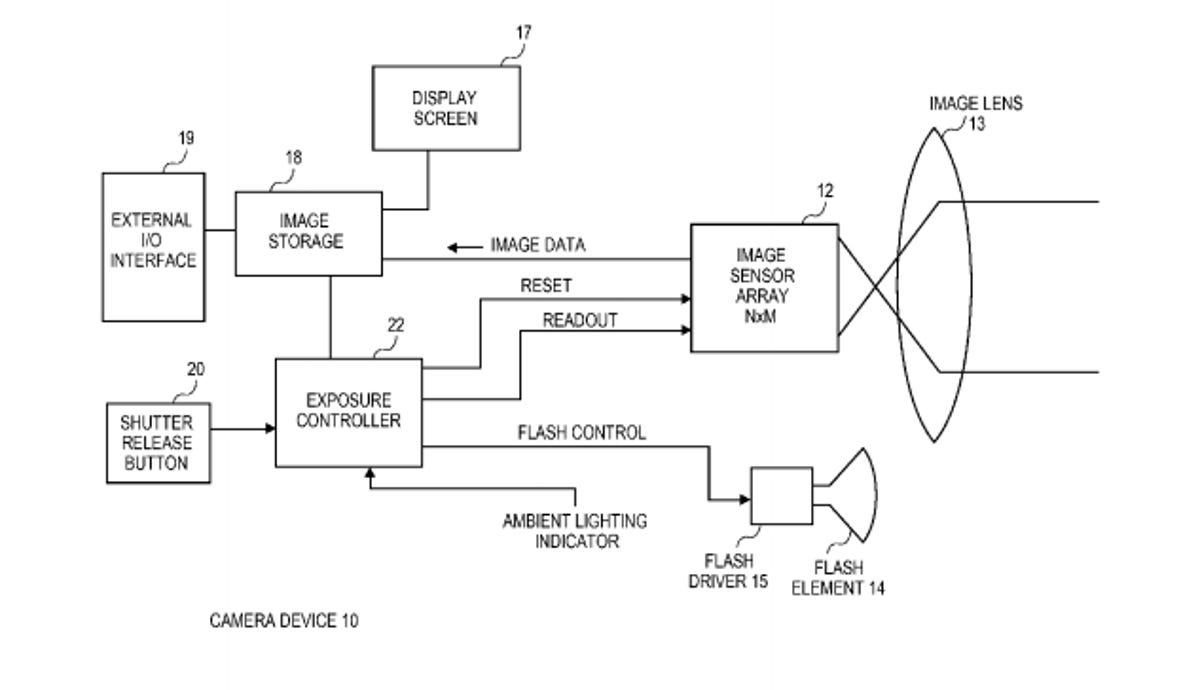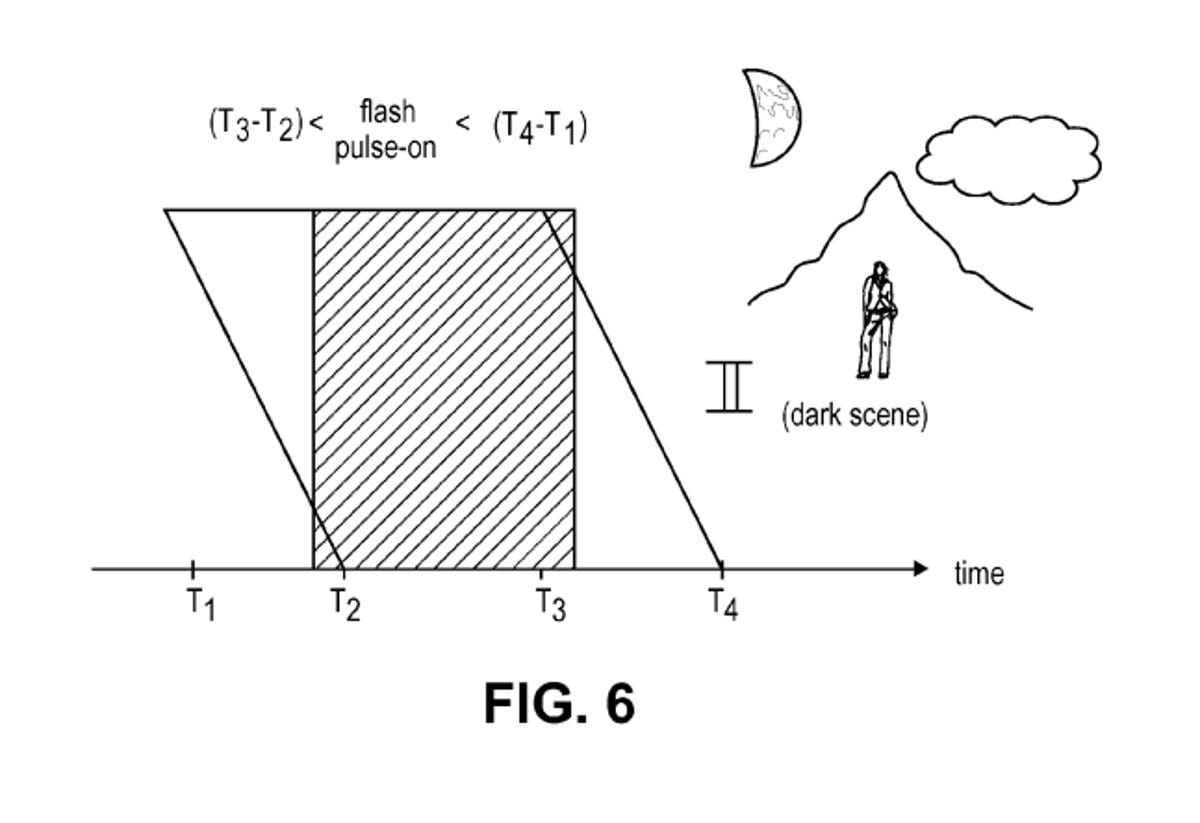
Apple's camera system
In a graphic labeled "camera 10" that accompanied Apple's patent No. 8,150,255, filed in June 2010 and published today along with 16 other Apple patents, we see some of the schematic workings of Apple's camera design, presumably for the iPhone 4-era camera.
The patent describes a system that "may be integrated or built into any one of several types of consumer electronic devices, including, for instance, a multifunction smartphone such as an iPhone device by Apple Inc., a mobile camera phone or cellular camera phone, a dedicated digital camera, a notebook or laptop personal computer, and a desktop computer."
Time interval shorter when light is bright
The patent summarizes the technology like this: "An embodiment of the invention is an electronic camera with electronic rolling shutter (ERS), having an exposure controller that can automatically set an integration time interval and a flash pulse-on time interval for a given exposure in accordance with at least two different scenarios, namely one for a 'dark' scene and one for a 'bright' scene."
The set integration time interval is shorter when the indication is bright than when the indication is dark; and the set flash pulse-on time interval is longer when the indication is bright than when the indication is dark.
Electronic rolling shutter timing for a dark scene
Flash pulse-on interval for bright scene
This image depicts example timing of another ERS exposure for which the flash pulse-on interval is as long as the image framing period when a bright scene is being indicated.
"This algorithm," according to the patent, "balances the need for obtaining good resolution of the foreground in the scene and minimizing the flash mechanism's power consumption, while taking advantage of a flash mechanism that may be based on an LED lamp, rather than a gas discharge lamp."
In this case, depicted in Figure 5, the controller has set the flash pulse-on interval in the case of a bright scene to be as long as the exposure complete time interval. For instance, it may be that a particularly short integration time interval has been set, thereby requiring that the flash be turned on for the entire duration of the picture-framing period to adequately expose the foreground."

Flash pulse-on interval in dark scene
A graphic from patent 8,150,255 shows an example timing of an ERS exposure for which the flash pulse-on interval is longer than the overlap interval but shorter than then image-framing period when a dark scene is being indicated.
"When the scene is indicated to be dark," according to the patent, "the integration time is lengthened and the flash pulse-on interval is set to be shorter than the complete exposure interval, but longer than the row overlap time interval."

